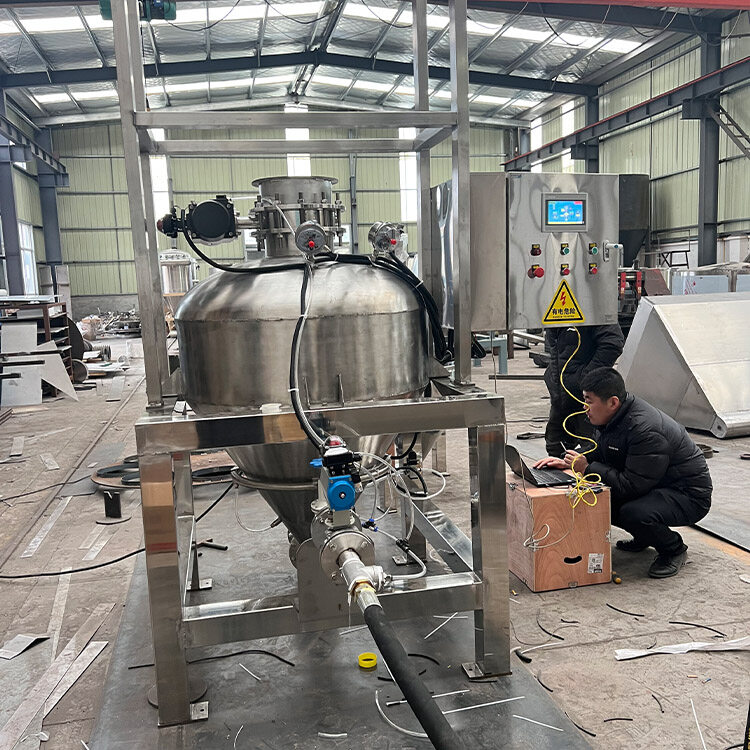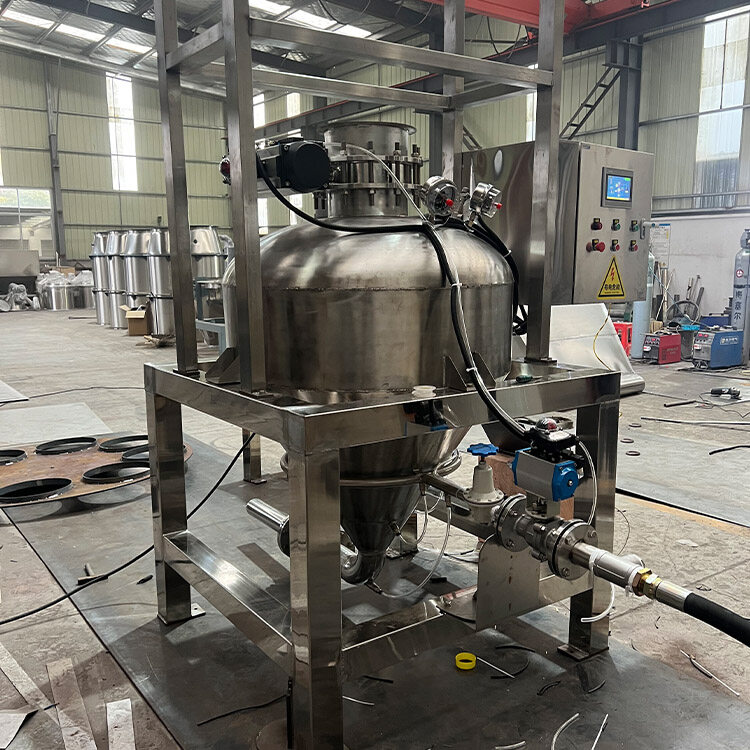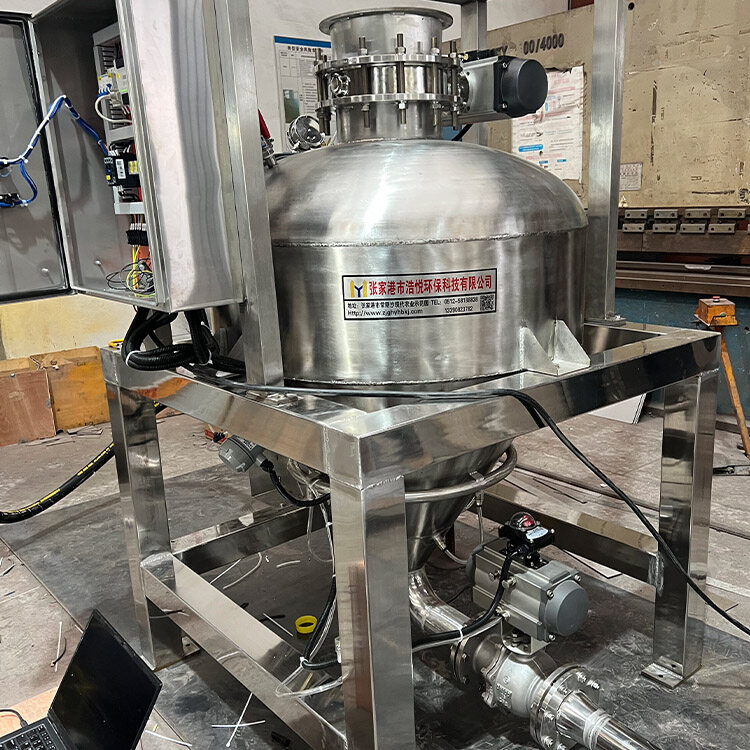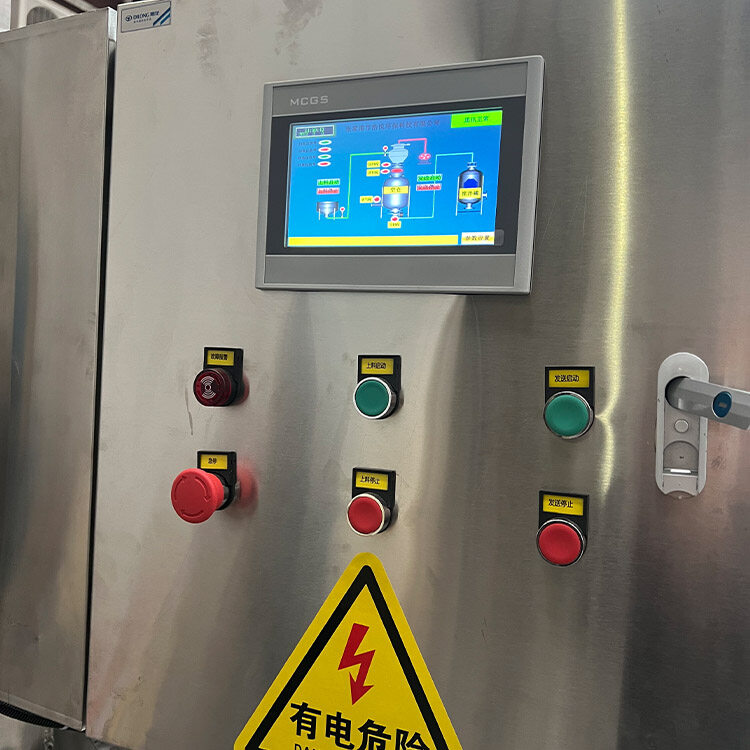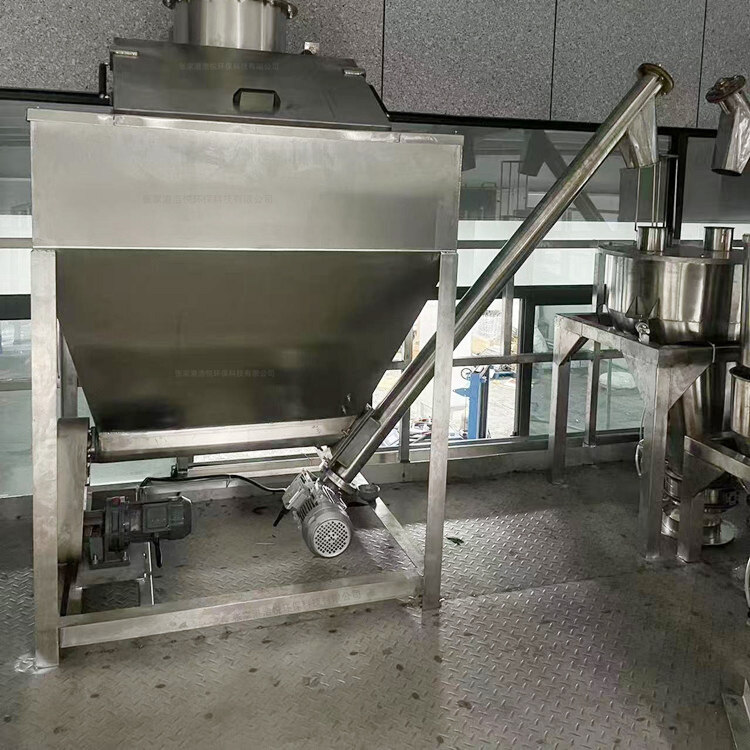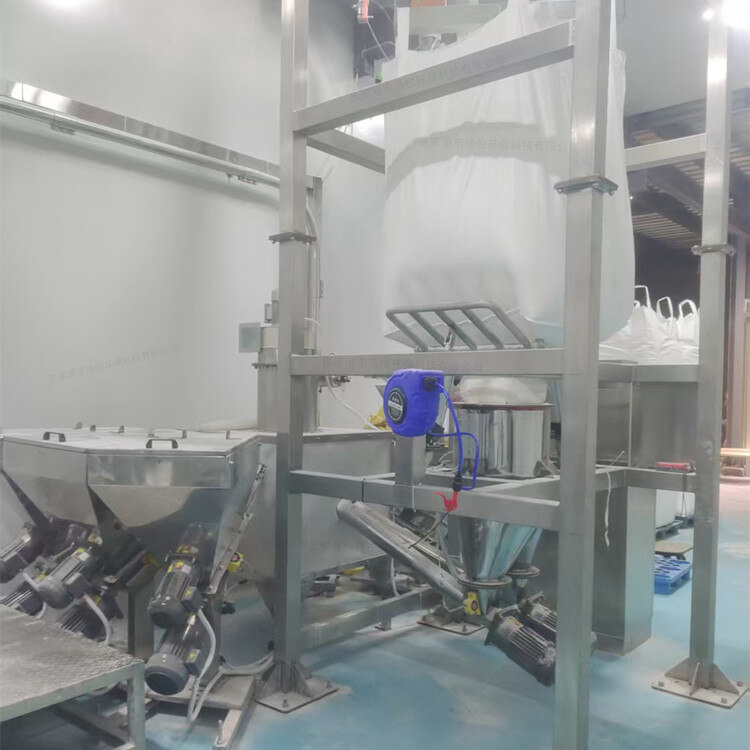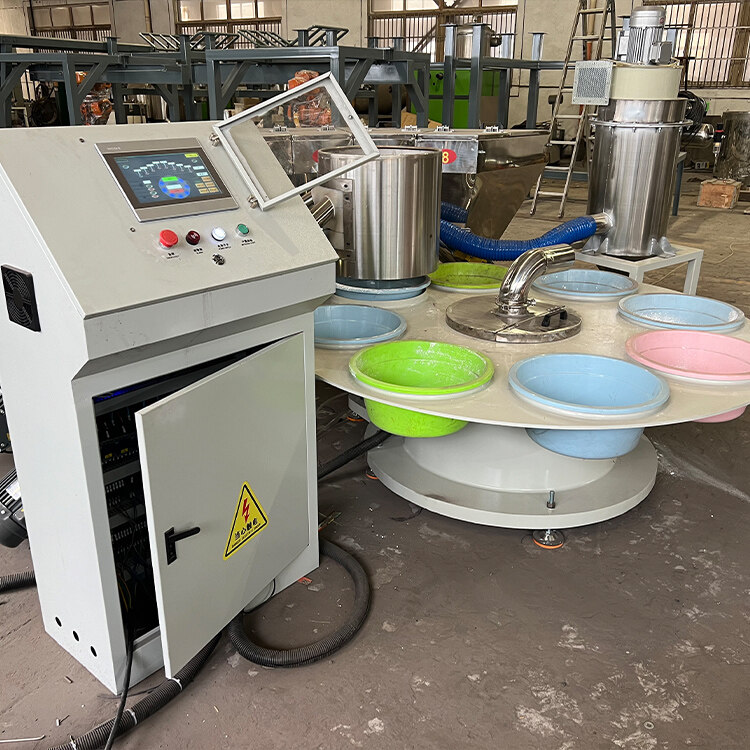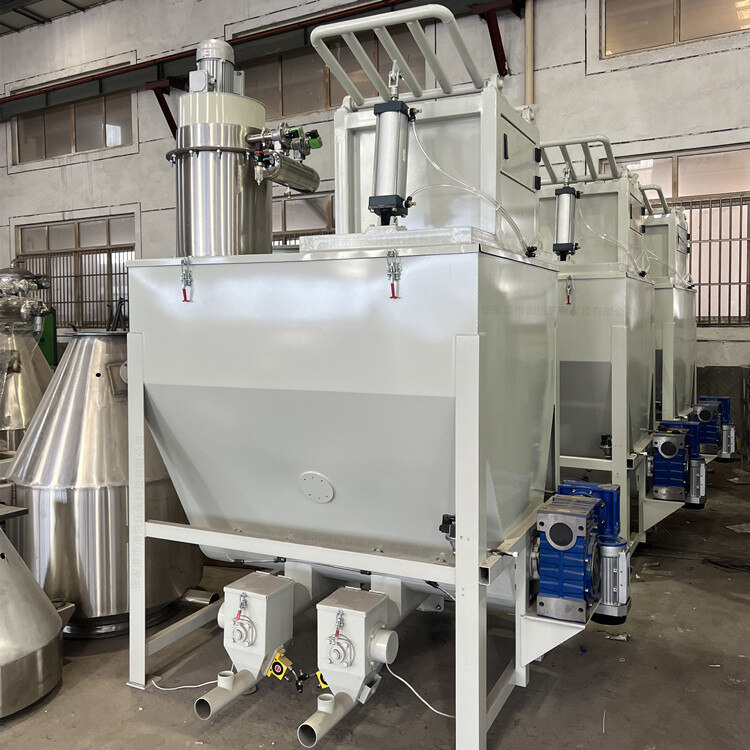- Introduction to automatic batching machine and fully automatic batching machine equipment
- The powder metering system tells you about the introduction of the mixing and drying machine
- 1000kg vacuum feeding machine
- Fully automatic small material batching system
- Research on Innovation of Automatic Weighing Machine Technology
- Design and operation of automatic batching system using PLC, industrial computer and frequency converter
Positive pressure conveying tank vacuum feeding machine
- Category:Automatic metering and conveying equipment
- Hits:197次
- Release Date:2025-06-23
- Share:
- Inquiry
- Details
1、 Working principle and core functions
The operation of the positive pressure conveying tank vacuum feeder is based on the composite principle of "pressure drive+vacuum adsorption". The system is divided into two stages: feeding and conveying:
Vacuum feeding stage: A negative pressure environment (usually -20kPa to -60kPa) is formed in the storage tank through a vacuum pump. Under atmospheric pressure, the material is sucked into the storage tank through the suction pipe from the feeding port. At this time, the filter inside the tank separates the material from the gas, and the clean air is discharged through the vacuum pump, while the material is temporarily stored in the tank.
Positive pressure conveying stage: When the material in the storage tank reaches the set amount, turn off the vacuum system, start the Roots blower or air compressor, and fill the tank with compressed air (pressure 0.1-0.3MPa). Under positive pressure, the material enters the conveying pipeline through the discharge valve and is transported to the designated location (such as the silo, mixer, reaction kettle). After unloading is completed, the system switches back to vacuum mode and enters the next cycle.
This device has the following core functions:
Efficient continuous conveying: It can achieve uninterrupted conveying of materials, with a horizontal conveying distance of over 100 meters and a vertical conveying height of over 20 meters. The maximum conveying capacity can reach 20 tons/hour, meeting the needs of large-scale production.
Clean and environmentally friendly operation: Fully enclosed pipeline and negative pressure adsorption design to prevent dust overflow, and the dust concentration in the workshop can be controlled below 1mg/m ³; The filter adopts polyester fiber or metal sintered filter element, with a filtration efficiency of 99.9%, preventing material leakage and pollution.
Flexible multi-point transportation: Through the distribution valve and pipeline layout, it is possible to achieve "one tank multiple delivery" or "multiple tanks one delivery", feeding from a single storage tank to multiple workstations, or centralized transportation from multiple storage tanks to the same destination.
Intelligent and safe operation: equipped with pressure sensors, level gauges, blockage alarms and other devices to monitor system pressure, level and pipeline status in real time; Automatic alarm and shutdown in case of abnormalities to prevent equipment damage; For flammable and explosive materials, explosion-proof design (Ex certification) can be adopted to ensure production safety.
2、 System composition and key structure
Vacuum and positive pressure generating device
Vacuum pump: commonly used rotary vane vacuum pump or Roots vacuum pump, providing stable negative pressure; Roots vacuum pump is suitable for high flow and high vacuum requirements, with a vacuum degree of over -90kPa.
Air source equipment: Roots blower or air compressor generates positive pressure, with a pressure range of 0.1-0.3MPa; Some systems are equipped with stabilizing tanks to ensure stable air pressure.
Vacuum positive pressure switching valve: It can quickly switch between two modes through pneumatic or electric control, with a switching response time of less than 5 seconds.
Storage tank and conveying pipeline system
Storage tank: made of carbon steel or stainless steel material, with a capacity customized according to demand (usually 1-10 cubic meters); The conical bottom design is paired with a vibrator or arch breaking device to prevent material clumping; Install a pulse blowback filter at the top to automatically remove dust from the filter bag.
Pipeline system: The pipeline material can be selected from 304/316L stainless steel (food and pharmaceutical industries) or carbon steel (chemical and building materials industries), with polished inner walls (roughness Ra ≤ 0.8 μ m); The elbow adopts a large curvature radius design to reduce material conveying resistance and wear.
Feeding and unloading unit
Feeding device: The end of the suction tube is equipped with a Venturi tube or suction nozzle to enhance the material suction capacity; For materials with poor liquidity, vibration chambers or mixers can be installed to assist with feeding.
Unloading device: The discharge valve adopts pneumatic knife gate valve or rotary valve, with good sealing to prevent air backflow; The discharge port can be connected to downstream equipment such as screw conveyors and pneumatic conveying pipelines.
control system
PLC+touch screen: Operators can set parameters such as feeding time, vacuum threshold, positive pressure conveying pressure, etc; Real time display of device operating status, fault codes, and generation of operational data reports.
Intelligent linkage function: It is linked with upstream storage silos and downstream production equipment, and automatically starts and stops the system based on material level signals; Support integration with the factory MES system to achieve remote monitoring and management of production data.
3、 Technical features and industry advantages
Strong material adaptability: It can transport various materials such as flour, carbon black, plastic particles, pharmaceutical intermediates, etc. By adjusting the vacuum degree, positive pressure, and pipeline diameter, it can adapt to materials with different flowability and density, avoiding blockage or residue.
Low maintenance cost: No direct contact between mechanical transmission components and materials, reducing wear and maintenance frequency; The filter supports quick replacement and easy cleaning; Modular design facilitates equipment maintenance and upgrades.
Energy saving and efficient operation: Compared with single positive pressure or vacuum conveying, the composite design optimizes energy consumption, saving 15% -30% energy; Variable frequency control technology can adjust the power of gas source equipment according to the actual conveying volume, further reducing operating costs.
Compliant with industry standards: Equipment in the food and pharmaceutical industries meets GMP, FDA and other certification requirements, uses food grade materials and polishing treatment, and supports CIP (in-situ cleaning) function; Chemical industry equipment can meet special requirements such as explosion prevention and corrosion prevention.
4、 Typical application scenarios
Food industry: used for conveying raw materials such as flour, sugar powder, milk powder, etc., to avoid dust flying and foreign matter pollution; In candy and biscuit production lines, automated transportation of raw materials from storage warehouses to processing equipment is achieved to ensure food safety.
Pharmaceutical industry: Transporting pharmaceutical raw materials, intermediates, and finished particles, fully enclosed and clean design to prevent cross contamination; Cooperate with A-level clean areas to meet the requirements of sterile drug production.
Chemical industry: transporting powdered chemical raw materials such as carbon black, pigments, catalysts, etc. Explosion proof design suitable for flammable and explosive scenarios; In plastic modification production, precise transportation and proportioning of plastic particles and additives are achieved.
Building materials industry: used for conveying bulk materials such as cement, fly ash, and mineral powder, with long-distance and high flow characteristics to reduce the number of conveying equipment and lower infrastructure costs.
5、 Technological development trends
Intelligent upgrade: Introducing AI algorithms to optimize the vacuum positive pressure switching strategy, achieving remote monitoring and fault warning of devices through the Internet of Things; Real time monitoring of material flow and pipeline pressure using sensors, and automatic adjustment of operating parameters.
Energy saving and environmental protection: Develop efficient and energy-saving vacuum pumps and gas source equipment, and use magnetic levitation fans to reduce energy consumption; Using renewable materials to manufacture pipelines and filters, reducing environmental pollution; Optimize system design to reduce noise to below 70dB.
Modularization and Customization: Launching standardized module components that support rapid assembly and functional expansion; Provide customized solutions based on customer specific needs (such as ultra clean and ultra-high pressure conveying) to enhance equipment versatility and adaptability.
The positive pressure conveying tank vacuum feeder has become an important equipment for modern industrial material transportation due to its high efficiency, energy saving, and environmental protection characteristics. With the continuous innovation of technology, it will continue to develop in intelligent, green, and efficient aspects, providing important support for the production upgrading of various industries.


